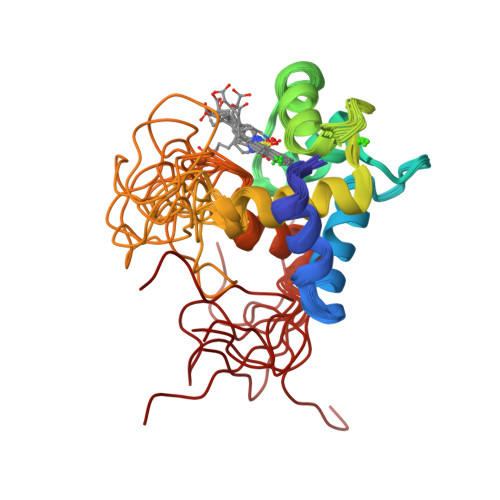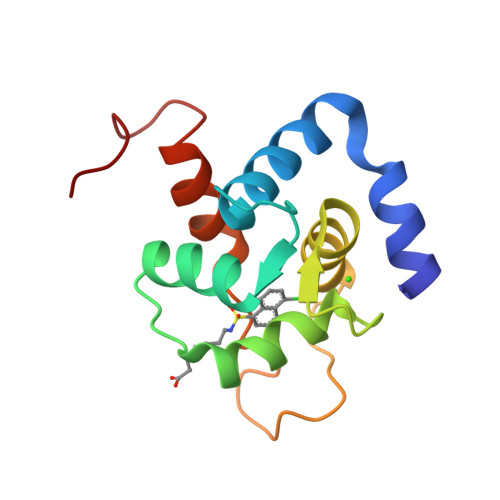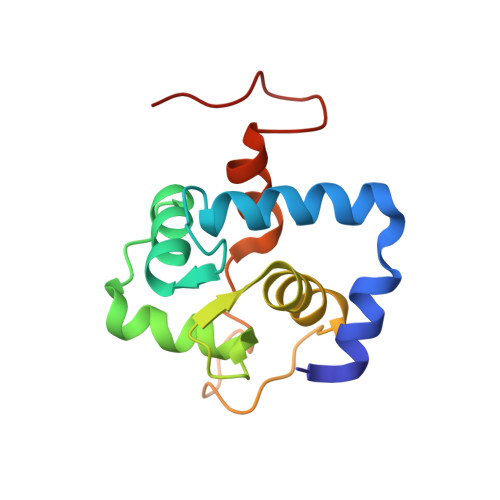The Role of Electrostatics in the Mechanism of Cardiac Thin Filament Based Sensitizers.
Cai, F., Robertson, I.M., Kampourakis, T., Klein, B.A., Sykes, B.D.(2020) ACS Chem Biol 15: 2289-2298
- PubMed: 32633482
- DOI: https://doi.org/10.1021/acschembio.0c00519
- Primary Citation of Related Structures:
7JGI - PubMed Abstract:
Heart muscle contraction is regulated by calcium binding to cardiac troponin C. This induces troponin I (cTnI) switch region binding to the regulatory domain of troponin C (cNTnC), pulling the cTnI inhibitory region off actin and triggering muscle contraction. Small molecules targeting this cNTnC-cTnI interface have potential in the treatment of heart disease. Most of these have an aromatic core which binds to the hydrophobic core of cNTnC, and a polar and often charged 'tail'. The calmodulin antagonist W7 is unique in that it acts as calcium desensitizer. W7 binds to the interface of cNTnC and cTnI switch region and weakens cTnI binding, possibly by electrostatic repulsion between the positively charged terminal amino group of W7 and the positively charged RRVR 144-147 region of cTnI. To evaluate the role of electrostatics, we synthesized A7, where the amino group of W7 was replaced with a carboxyl group. We determined the high-resolution solution NMR structure of A7 bound to a cNTnC-cTnI chimera. The structure shows that A7 does not change the overall conformation of the cNTnC-cTnI interface, and the naphthalene ring of A7 sits in the same hydrophobic pocket as that of W7, but the charged tail takes a different route to the surface of the complex, especially with respect to the position of the switch region of cTnI. We measured the affinities of A7 for cNTnC and the cNTnC-cTnI complex and that of the cTnI switch peptide for the cNTnC-A7 complex. We also compared the binding of W7 and A7 for two cNTnC-cTnI chimeras, differing in the presence or absence of the RRVR region of cTnI. A7 decreased the binding affinity of cTnI to cNTnC substantially less than W7 and bound more tightly to the more positively charged chimera. We tested the effects of W7 and A7 on the force-calcium relation of demembranated rat right ventricular trabeculae and demonstrated that A7 has a much weaker desensitization effect than W7. We also synthesized A6, which has one less methylene group on the hydrocarbon chain than A7. A6 did not affect binding of cTnI switch peptide nor change the calcium sensitivity of ventricular trabeculae. These results suggest that the negative inotropic effect of W7 may result from a combination of electrostatic repulsion and steric hindrance with cTnI.
Organizational Affiliation:
Department of Biochemistry, University of Alberta, Edmonton, AB T6G 2R3, Canada.




















